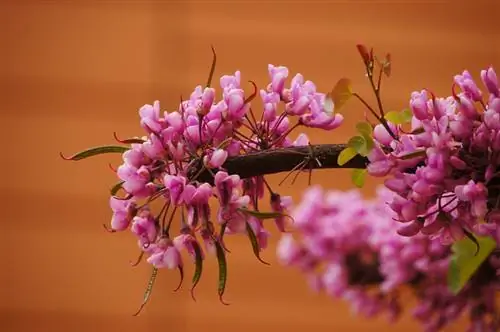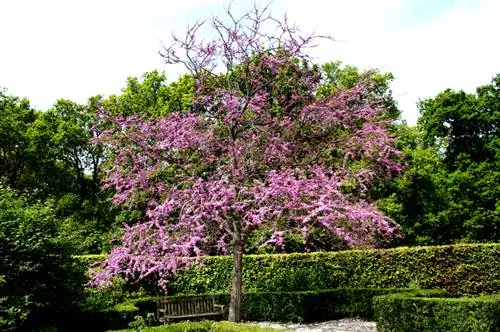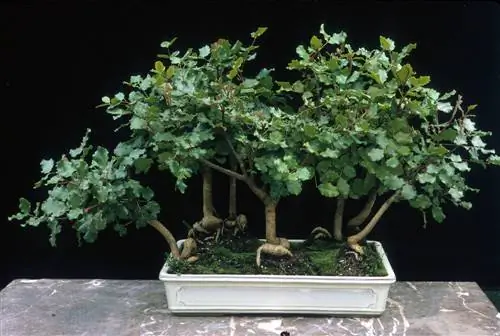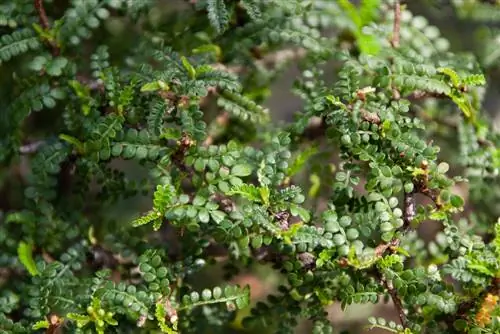- Author admin [email protected].
- Public 2023-12-16 16:46.
- Last modified 2025-01-23 11:20.
The Judas tree (Cercis) is ideal for bonsai cultivation and can be designed in many different styles: upright, as a half cascade or cascade, as a solitary, double or multiple trunk. The tree is not only easy to cut, but also resistant to diseases and pests - provided you care for your Cercis appropriately. Then you will not only be rewarded with a beautiful bonsai, but also with numerous flowers in spring. As one of the few ornamental trees, the Judas tree sprouts not only from the young, but even from the old wood and directly from the trunk.

How do I properly care for a Judas tree bonsai?
A Judas tree bonsai needs a sunny, protected location, slightly moist substrate without waterlogging and regular fertilization in summer. Cutting and wiring should only be done after flowering, and the winter storage must be frost-free.
Location: sunny and sheltered
However, you will only be able to admire this splendor of flowers if your Cercis is in a location that is comfortable for it. The tree likes it to be as sunny, warm and protected from the wind as possible - if the Judas tree is used to it, it can stay in direct sun even in midsummer, but the substrate should not dry out. The bonsai feels most comfortable in a south-facing location. When it comes to substrate, it is best to choose a good universal substrate that you mix with plenty of coarse sand. Also pay attention to the pH value, which should be in the neutral to slightly alkaline range.
Watering and fertilizing
Cercis should always be kept slightly moist if possible, although you should definitely avoid waterlogging. Use rainwater or stale tap water, which you can use to spray vigorously over the entire plant, including all of the leaves, using a very fine spray. There is significantly less watering in winter than in summer. In contrast to the large Judas trees, Bonsai Cercis should be fertilized regularly between May and August. Liquid bonsai fertilizers (€8.00 on Amazon) on an organic basis are particularly suitable for this. However, make sure to choose a fertilizer that is low in nitrogen - Judas trees are able to bind nitrogen from the air with the help of bacteria.
Cutting and wiring
If you want to enjoy the beautiful flowers, you should only cut back your Judas tree after it has bloomed. If you place less value on this, you can prune it as early as March. Root pruning is carried out when repotting, which is necessary every two years. Cercis is also very easy to wire, although you should remove the wire by mid-May at the latest - otherwise there will be unsightly traces of wiring on the twigs and branches.
Tip
While planted Judas trees can often overwinter outside, Cercis bonsai belong in frost-free overwintering.






